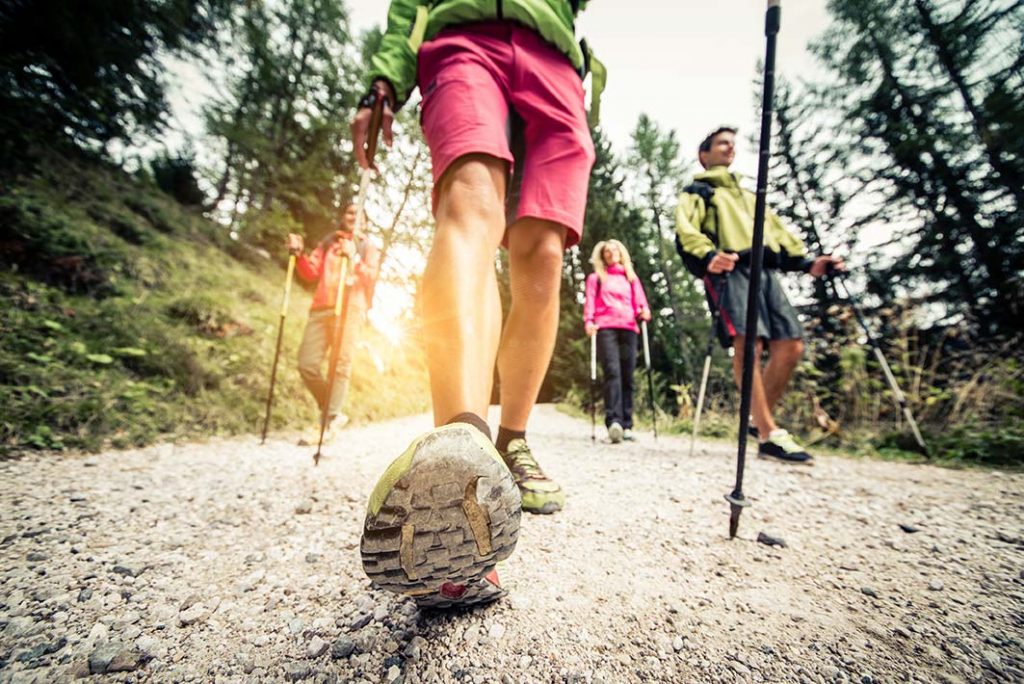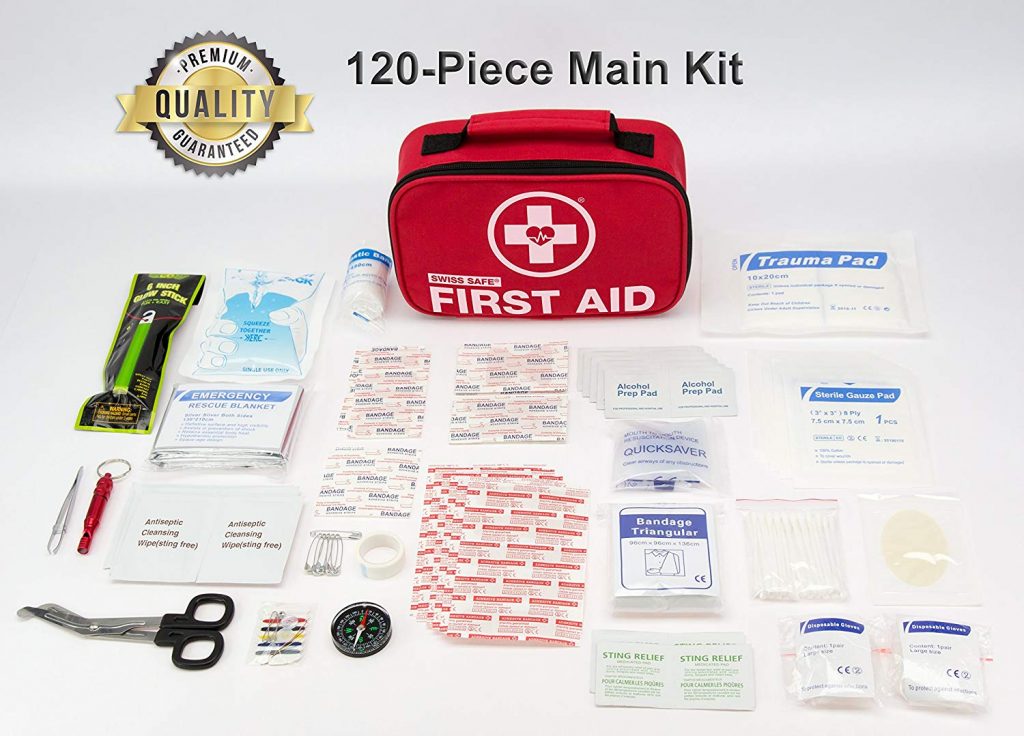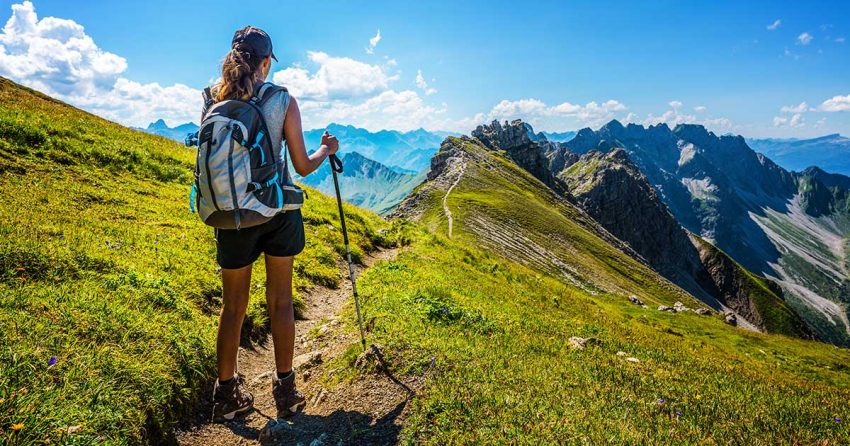This post is the first in a brand-new category of articles on Camping Mastery focused on hiking. Hiking and camping go hand-in-hand and overlap in the woods and trails. If you’re camping then hiking is a sure fire way to enhance your outdoor experience.
Getting Started Hiking
Often one leads to the other and since we have built a powerhouse resource for camping we’ll start right at square one and cover hiking for beginners.
Our goal is that over the next few weeks we’ll have an excellent hiking resource available here on Camping Mastery.
Who is this for? All Hikers.
Whether you’ve been hiking your whole life or this is the first time you are strapping on your hiking boots there is always something new to learn. Going over the fundamentals is always good and thanks to technology the hiking landscape is always changing. Even experienced hikers can take something away.
Each hike is different and presents its own challenges and rewards. The fundamentals, however, remain the same. As we explore hiking for beginners we want to focus on the fundamentals.

10 tips for Hiking
Today we are going to cover some elements of hiking that are true for most if not all hikes. These are also good principles to remind ourselves of lest we should forget.
1. Plan Ahead
A successful hike starts before you even leave your house. Make a plan for your hike. You wouldn’t hop in your car and start in on a road trip, right? You would map out your trip. You would likely plan for gas stations and rest stops. Perhaps you are planning a family hiking holiday or a solo excursion – wither way having a plan is key to success.
The same is true for planning your hike. You will want to know where you are going. You will also ensure you have everything you need to make this hike successful. A few of the Important questions to consider when planning your hike include:
- What hiking trail am I taking?
- Where and when will I be hiking?
- How long is the hike?
- How difficult is the terrain?
- Is there cell phone reception? If not how will I communicate in the case of an emergency?
- Who will know that I am hiking?
- Do I have more than enough food?
- Do I have more than enough water?
- What time does it get dark? Am I prepared for getting caught in the dark.
- Are you going overnight? Do you have a good tent for hiking?
2. Set a Goal
What does a successful hike look like?
Start small and set achievable goals. The first goal should be to simply gain exposure to hiking. Gaining exposure will increase your confidence and knowledge. Accomplish short easy trails just to see what works and what doesn’t. By setting an obtainable goal you will set yourself up for success. Use the momentum of this new-found experience to propel you into your next hiking venture.
3. Take Care of Yourself
Be sure to take care of yourself on your hikes. This means packing more than enough water and staying hydrated. Hydration is imperative for your body’s physical ability to push through the physical demand of hiking. If you are thirsty you aren’t drinking enough. When in doubt – hydrate.
Along the same lines you will want to make sure you have food to fuel yourself through to the end. Adventure Alan recommends keeping it simple, nutritious and keep it light. Always pack more then you need as you never know what may happen and prepare for the unexpected.
Related: Going Camping & Hiking? Read These 11 Safety Tips First
Be sure to pack sunscreen, toilet paper and a first aid kit. Having a first aid kit on hand will provide the necessary tools and materials to address a wide range of issues that can come up on a hike.

4. Take it Slow
Take it slow, especially as you start out. Remember this is not a race. Try to go slow and consciously stop to take in nature. Know that hiking is a marathon not a sprint. Energy and effort will be expended throughout the hike.
You can find hiking for your first easy hike at a local park or a state park.
It’s easy to want to go fast at first. You may have adrenaline pumping with excitement. Certainly your muscles and cardio will be at full capacity. But as you start your body will be producing oxygen inefficiently resulting in greater levels of lactic acid and depleted energy in a short amount of time. This is true of anybody at any fitness level.
It is far better to start slower than you think you should and slowly pick up the pace as you feel comfortable through the hike. The body will adjust over time and start producing oxygen more efficiently. This approach will reduce soreness and ensure you have enough left in the tank for the back half of the hike.
5. Check the Weather Forecast
How will the weather affect your hike? If the weather is calling for heat and sun you will want to pack extra sunscreen, water and bug spray. You will likely want to find a trail that has more shade and limit the physical excursion required. A shady flat hike would work better in heat and sun then an exposed mountain hike.
Hiking in thunderstorms where lightening is present is not recommended. Of course these storms can be unpredictable and catch the most seasoned hiker off guard.
If you are hiking and get caught in a lightning storm remember to stay away from tall trees and make yourself small. Stay out of standing water and get into lowest laying territory you can find quickly.
Hikers have been known to get caught in hailstorms while hiking high, exposed altitudes. This can be a dangerous situation if there is no cover from the hail.
The important thing to keep in mind when hiking and getting caught in bad weather is to not panic. Take a couple of deep breaths and try to calm yourself. Your body will be in fight or flight mode and will want to take immediate action. It is important to control the urge to panic and assess the situation thoroughly and apply the best solution available.
Will it be cold on your hike? Hiking in the cold brings its own set of challenges. Your clothing will need to reflect the weather and you should prepare for cold weather hiking. Be sure to wear a hat. Do not wear tight fitting clothes and avoid cotton. Be sure you are drinking water and staying hydrated.
6. Tell Someone Where You Will Be
Ideally go hiking with a partner. There is safety in numbers and experiencing the hike with a friend is a great way to spend time together.
If you are going to be hiking solo it is important to let someone know where you will be. Be sure to let them know where you are, what time you expect to return. Ask them to check in with you during and especially after the hike to ensure your safe return. If you are carrying a GPS enabled device you may consider adding them to an app that will allow them to track your progress. This will let them know where you are in the case of an emergency and know how to locate you.
7. Dress Appropriately
Start with your feet.
Wear the right shoes or boots for the hike. Consider if you will need waterproof gear for the trails. It may be better to wear hiking gaiters. Consider wearing boots if the terrain is rough or if the trail is in bad shape. Along with the right shoes be sure to wear the correct socks. Keeping your feet happy is pertinent to having a pleasant hiking experience. Tight fitting shoes can quickly create problems that will exponentially worsen over the hike.
Related: Hiking Boots for Women
Wear a hat and protect yourself from the sun. If it is hot you may want to consider light athletic wear that will help keep you cool be wicking away the swat.
If it Is cold avoid cotton and tight fitting clothes. Protect your face against the elements and wear goggles
8. Pack for the Unexpected
You may be packing for a day hike but you will want to make sure you have the essentials required for hiking the dark. A headlamp, gloves and extra batteries should always be in the pack. Hikes are great when everything goes as expected but there are many ways that a hike can go sideways in result in the unexpected. The most common thing is getting lost or otherwise taking longer than expected. This may result in requiring hiking in the dark. Packing a headlamp with extra batteries will help finish up a hike. This is also a good reason to pack more food and water then originally expected.
As mentioned earlier be sure to pack a first aid kit which will help in many unexpected events.
Be sure to check out our Hiking Gear for Beginners checklist.
9. Review Your Hike After You Are Done
After your first few hikes take a moment and reflect on the experiences. What worked well? What could be done better? What were your favorite parts of the hike? By truthfully examining your hike you will have a better idea on what to do differently next time. What hurt at the end of the hike or the following day? Did the gear work? Did the shoes fit? What was the scariest moment and how can you have more confidence in that same situation next time?
To help with this process it is recommended that you keep a log or a journal recording your hike.

This will help track your progress. Capturing the details of a hike in a journal will prove very helpful in understanding your progress made over the next several hikes. There may be things you struggled through early on that became second nature in later hikes. By keeping a journal you will stay encouraged on all of your accomplishments.
Use the information from your experience to help set your next achievable goal. There are plenty of limits to challenge in hiking. Find the challenge that resonates with what you enjoyed in your hiking experience. Remember to set goals in small incremental steps. If the exercise and the accomplishment of hiking 2 miles is what you enjoyed – then set a goal for 3.
10. Know your Hiking Etiquette
This may be your first rodeo but you should respect the rules of the trails when interacting with other hikers and outdoor enthusiasts.
Right of way on the trails
The generally accepted rule of thumb is Horses -> Hikers -> Bikers.
- Horses. When you come across horses be sure to give them plenty of room. If you are able to try to vacate the path on the down hill side. Move slowly so as not to startle the horses.
- Hikers – Always stay to the right and remember that hikers going uphill have the right of way. Yield to uphill hikers.
- Bikers – Mountain bikers are typically expected to yield to hikers but since they are moving quickly it may be easier for a hiker to simply side step.
- Be friendly to other folks on the trail. It’s good to see and be seen by others. We are all sharing an experience and being aware of each other is good for safety reasons. As such it is good to respectfully acknowledge each other.
- Leave no trace. This pertains to garbage, waste, structures and anything else you may leave in your wake. Move 200 feet from the trail to dig your cat hole.
and my personal pet peeve: Don’t be that person that plays music on the trail. Use headphones. We didn’t come out for a hike in nature to hear your music.
Have respect
As with all etiquette it comes down to respect.
- Have respect for others around you.
- Have respect for the trail you’re on.
- Have respect for those who come after you.
In Conclusion
Hiking is a great way to enhance your camping trip into the woods. We are very excited about this new section and we welcome your feedback.
If you have any hiking tips for beginners you’d like to share please contact us or comment below! Best of luck and stay safe out there.

